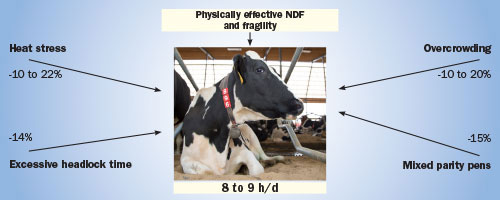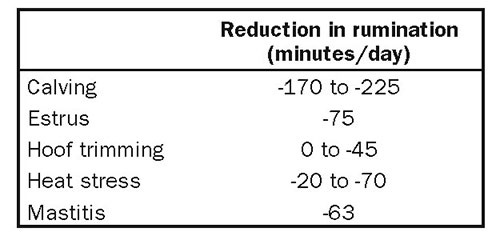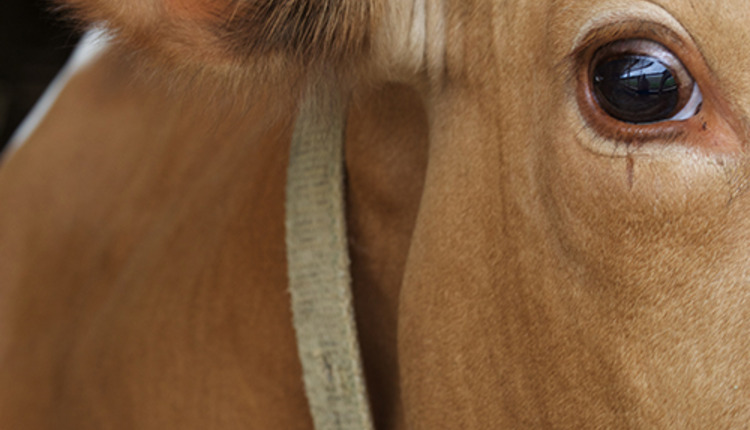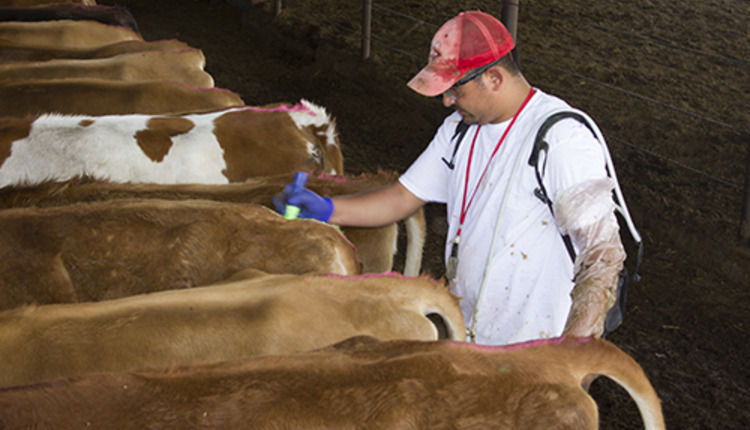"Not only does rumination reflect cow health, it is highly sensitive to cow well-being," noted the Miner Institute's Rick Grant.
Rumination is a cyclical process that is influenced by dietary and management factors along with other potential external stressors in the cow's environment. Under ideal conditions, mature cows will spend 480 to 540 minutes per day ruminating. Cow and nutritional factors, such as the amount and quality of forage-fiber, may set a "normal" maximum amount of rumination activity.
"Then, as nutritionists or farm managers, we essentially reduce that maximal activity with nonideal management," added Grant at the Cornell Nutrition Conference (figure).

If rumination is chronically depressed by 10 to 20 percent, cows are likely to experience compromised ruminal function and are put at greater risk for associated problems such as subacute ruminal acidosis, lameness, and lower milkfat and protein output.
Current research and on-farm experiences have demonstrated the value of monitoring rumination to identify nutritional problems, find cows in heat and detect health disorders sooner. Rumination also responds to stressors 12 to 24 hours sooner than traditional measurements, such as temperature, milk yield or other clinical signs.
With the aid of on-farm observations, expected changes in rumination time for a variety of routines and biological processes have been reported (table).

Monitoring deviations in rumination from a baseline provides the most useful information. "The change in rumination time from day to day may be more important than the amount of time a cow spends ruminating each day," added Grant.
A recommended target for making decisions would be a deviation in rumination of greater than 30 to 50 minutes per day for either an individual cow or a group.
To comment, email your remarks to intel@hoards.com.
Rumination is a cyclical process that is influenced by dietary and management factors along with other potential external stressors in the cow's environment. Under ideal conditions, mature cows will spend 480 to 540 minutes per day ruminating. Cow and nutritional factors, such as the amount and quality of forage-fiber, may set a "normal" maximum amount of rumination activity.
"Then, as nutritionists or farm managers, we essentially reduce that maximal activity with nonideal management," added Grant at the Cornell Nutrition Conference (figure).

If rumination is chronically depressed by 10 to 20 percent, cows are likely to experience compromised ruminal function and are put at greater risk for associated problems such as subacute ruminal acidosis, lameness, and lower milkfat and protein output.
Current research and on-farm experiences have demonstrated the value of monitoring rumination to identify nutritional problems, find cows in heat and detect health disorders sooner. Rumination also responds to stressors 12 to 24 hours sooner than traditional measurements, such as temperature, milk yield or other clinical signs.
With the aid of on-farm observations, expected changes in rumination time for a variety of routines and biological processes have been reported (table).

Monitoring deviations in rumination from a baseline provides the most useful information. "The change in rumination time from day to day may be more important than the amount of time a cow spends ruminating each day," added Grant.
A recommended target for making decisions would be a deviation in rumination of greater than 30 to 50 minutes per day for either an individual cow or a group.
(c) Hoard's Dairyman Intel 2015
October 26, 2015








